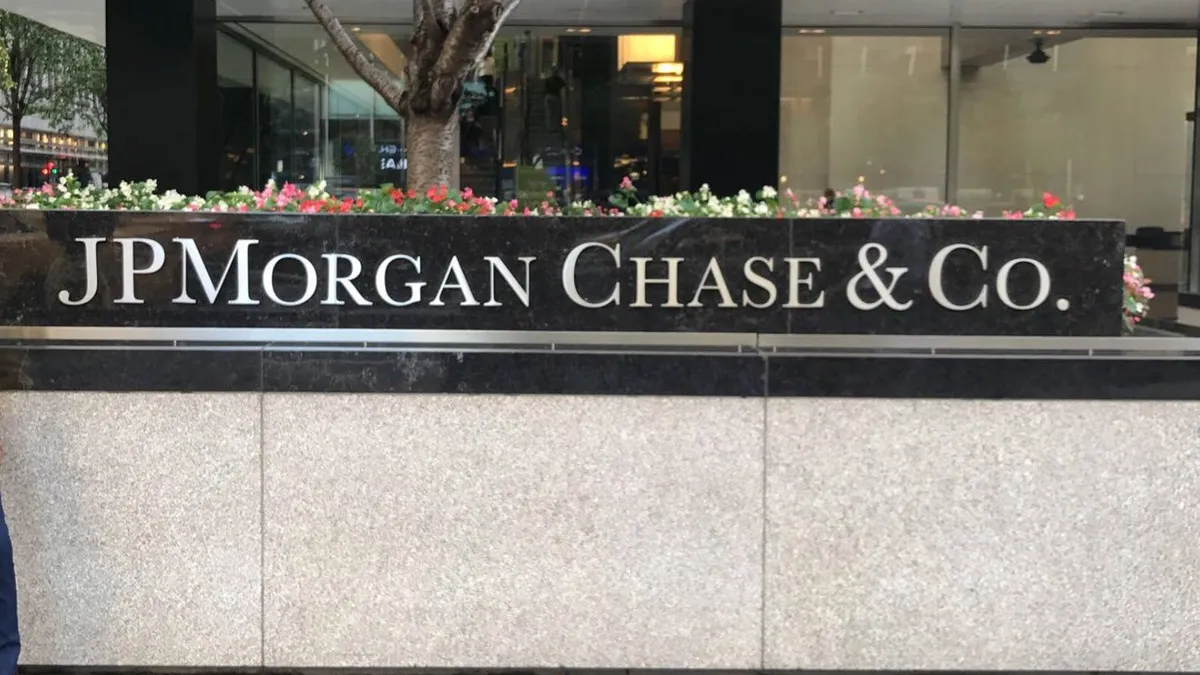Dive Brief:
- Employees in JPMorgan Chase’s corporate and investment bank will toggle between working from the office and from home, permanently keeping in play — at least part of the time — a remote-work option, Daniel Pinto, the bank’s co-president, told CNBC. “Depending on the type of business, you may be working one week a month from home, or two days a week from home, or two weeks a month,” Pinto said via Zoom.
- Driving the bank’s move are a number of factors, including the possibility that New York schools may reopen to in-person learning this fall, which is drawing some families back to the city, where they have primary residences. Additionally, some workers are experiencing burnout from being at home for several months, and some managers are noting a dip in productivity. However, social distancing requirements are capping building capacity at about half what it was prior to the pandemic.
- The bank’s trading unit is already testing the rotational work model, and investment bankers are slated to start soon, Pinto said. JPMorgan’s New York buildings are at roughly 10% capacity on average, while trading businesses are closer to 30%, CNBC reported.
Dive Insight:
Office return dates will likely be a hot topic in the coming weeks; a number of banks, including Capital One and Bank of America, have long used Labor Day as a baseline to attempt a resumption of in-person work.
Several banks, however, have tempered their expectations. Bank of New York Mellon on Wednesday confirmed it has told most of its employees to continue working remotely until at least Jan. 1. The bank had planned for some employees to return next month.
“Our top priority remains the health and safety of our employees and our clients,” spokeswoman Madelyn McHugh told Bloomberg in an emailed statement. “We remain operational and responsive to client needs during this time.”
About 96% of the bank’s employees have worked remotely since March, according to the wire service.
BNY Mellon isn’t the only bank postponing return plans. Wells Fargo has pushed back its date at least twice, most recently to October. Truist this month delayed its return until at least Jan. 31, 2021. Citi in July was forced to delay its expected office returns in 13 states. Some managers at the bank have posted sign-up sheets to gauge demand for a September return, people with knowledge of the matter told CNBC.
Others, such as Morgan Stanley and Goldman Sachs, returned some workers in June.
At JPMorgan Chase, Pinto first sketched out a rotational return-to-work model in May as one of several potential scenarios. He said more recently that the exact schedules for return will vary by business unit.
Record results in JPMorgan Chase’s trading unit no doubt bolstered Pinto’s confidence that employees can work efficiently from home. The unit posted a 32% increase in revenue in the first quarter. JPMorgan’s investment bank followed that up in the second quarter with an 86% jump in net income from 2019’s second quarter. However, Pinto said the bank will have to create new tools to manage remote workers and track productivity.
The hybrid model may help the bank achieve a number of goals, including cost savings and sustainability. Some of the savings would come in the form of real estate: If more employees are regularly working remotely, the bank may not need to hold as much office space. Nor would it need to keep so many permanent workspaces: Employees could work from temporary hot desks when they’re in the office.
Or perhaps the bank could close backup trading floors outside New York and London.
“We have all these empty buildings that are recovery sites,” Pinto told CNBC. “You don’t really need the bulk of those, because if people can work from home very effectively, you don’t need to have recovery sites.”
Fewer employees commuting into the office also would mean less reliance on public transportation, which would in turn reduce COVID transmission risk and increase sustainability.
Maintaining a rotational model may also help the bank and its employees stay prepared in case future spikes in coronavirus infection rates necessitate further lockdowns.
“[The hybrid working model is] in everybody’s game plan now, where it wasn’t before,” Tim Carmody, chief technology officer of IPC, told CNBC.








